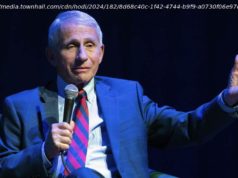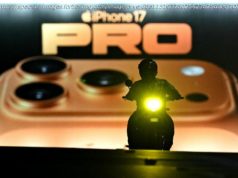Biracial representation is sorely needed in a country with a fraught relationship with mixed-race people.
Growing up in the late ’80s as a biracial girl, I never had a mixed-race princess whose image I could sport on my backpack or my lunchbox. There was little to no representation of my identity — almost no characters in movies or television shows, no musicians or celebrities who identified as mixed-race.
For today’s biracial youth, Meghan Markle, the actress who is marrying into the British royal family — and who has defined herself publicly as “a strong, confident mixed-race woman” — represents the biracial role model I didn’t have growing up.
My mother is white and my father is black, and as a social psychologist, I research mixed-race identity and perceptions of biracial people for a living. The history of biracial couplings and children in our country is fraught: The “one drop” rule that categorized people with any African ancestry as “colored” was legally codified in a couple of states in the early 1900s. Interracial marriage was illegal in some states starting in 1664 until 1967 with the famous Loving v. Virginia case, and it wasn’t until the year 2000 when the option to “check all that may apply” for race appeared on the census.
(Although legally the “one drop” rule is not in use today, it is often informally used when white people visually categorize racially ambiguous people, particularly when they believe they are under some type of social threat.)
Slow social acceptance of multiracial identities remains the norm, even though it is at odds with changing US demographics now more than ever. The biracial population is one of the fastest-growing groups in our country. Other communities of color have long argued that representation of one’s race within the media, our government, and our schools is critical to children’s successful life outcomes and aspirational goals. Yet who can biracial kids look up to if the popular press and culture avoid this racial identity?
This constant either/or thinking about race tends to put people into fixed boxes. Perhaps that’s why the word “biracial” is so difficult for people to use — it disrupts that way of thinking. Right before Barack Obama’s reelection, I led a study on perceptions toward Obama’s race. Before the election, we found that white people thought he was “too black” and black people found him to be “too white.”
Those perceptions shifted significantly after his reelection. Only then did white individuals see Obama as being “white enough” for them and black individuals see him as being “black enough.” This switch suggests people did seem to understand that he was biracial but found it easier to claim him as a racial in-group member once he became a success story.
As my other recent research shows, interacting with someone who is racially ambiguous in appearance is also more cognitively demanding than interacting with someone whose racial background is “clearly” known. We videotaped white participants interacting with a racially ambiguous research assistant. One group of subjects was told that the assistant was biracial while the other group was not. The research assistant rated participants’ nonverbal behavior, such as smiling or their level of physical engagement in the interaction, as more comfortable and less anxious when the research assistant’s race was identified.
Other research has highlighted that the word “biracial” is harder for people to think about than monoracial categories. Physical appearance tends to play a very big role in the way people assign race, particularly here in the US.
During a 60 Minutes interview, Obama, when asked about his own racial identity, said, “I’m not sure I decided it. I think, you know, if you look African American in this society, you’re treated as an African American.” And in a recent episode of the Netflix TV show Dear White People, mixed-race people are divided into two groups: “You’re not Rashida Jones biracial,” one character says to another, “you’re Tracee Ellis Ross biracial — people think of you as black.”
I am the “Rashida Jones” version of biracial. I have white skin and dark brown, wavy hair — people always assume I’m white. Mariah Carey, who has a white mother and a black, Venezuelan father, was the only white-looking biracial person I knew of growing up. She was the biracial role model I needed, and I often thought of her when I struggled with the constant denial and questioning I faced whenever I told someone I was part black.
Throughout my childhood, I constantly received the message that I didn’t “match” my black father when I was out with him in public. Sometimes people saw my father and me in the mall together and assumed my dad was kidnapping me. Other times, they thought he was the hired help picking me up from school. I carry around a family photo in my wallet still to this day to help me through these conversations — it is my proof, my “black card.”
My identity struggles continued. After taking the PSAT in high school, I remember feeling confused after receiving an award in the mail honoring me for being a black person — not a biracial person — who scored highly on the exam. During graduate school, there were people who told me that the only reason I won a competitive National Science Foundation award was because I played my “race card.” People assumed affirmative action policies were the only way I could have received such an award.
Recently, my collaborators and I documented this negative perception — less trust and more dislike — that people have of biracial individuals who are seen as contextually claiming one of their racial identities over the other. This only adds to the self-doubt that so many biracial people face.
Don’t get me wrong. I have led a privileged life in many ways because I look and pass as white. I have never been pulled over for “driving while black” or followed while shopping in stores because of the color of my skin. Biracial people who look physically more like a racial minority group member are going to face systemic problems in our society that I am lucky not to face.
But all types of biracial people who claim their multiple racial identities may still struggle with questions about their identity and fitting in. Everyone, no matter their racial background, has a built-in need or desire to belong. And being forced to constantly defend your own identity, to defend who it is that you are, can be exhausting and mentally draining.
In fact, the biracial demographic is now facing higher rates of mental health outcomes and increased substance abuse. Many argue it’s because of this lack of belonging to their respective racial groups. The frequency with which many biracial people hear the question “What are you?” highlights the confusion that biracial people are often faced with when they meet someone new for the first time.
Home
United States
USA — Science I study biracial identity in America. Here’s why Meghan Markle is a...






